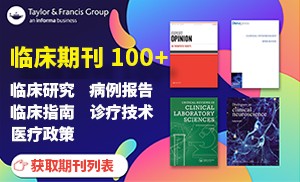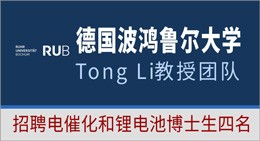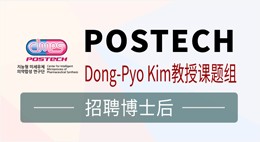-
Distinct synaptic plasticity rules operate across dendritic compartments in vivo during learning Science (IF 44.7) Pub Date : 2025-04-17
William J. Wright, Nathan G. Hedrick, Takaki KomiyamaSynaptic plasticity underlies learning by modifying specific synaptic inputs to reshape neural activity and behavior. However, the rules governing which synapses will undergo different forms of plasticity in vivo during learning and whether these rules are uniform within individual neurons remain unclear. Using in vivo longitudinal imaging with single-synapse resolution in the mouse motor cortex during
-
Bacterial pathogen deploys the iminosugar glycosyrin to manipulate plant glycobiology Science (IF 44.7) Pub Date : 2025-04-17
Nattapong Sanguankiattichai, Balakumaran Chandrasekar, Yuewen Sheng, Nathan Hardenbrook, Werner W. A. Tabak, Margit Drapal, Farnusch Kaschani, Clemens Grünwald-Gruber, Daniel Krahn, Pierre Buscaill, Suzuka Yamamoto, Atsushi Kato, Robert Nash, George Fleet, Richard Strasser, Paul D. Fraser, Markus Kaiser, Peijun Zhang, Gail M. Preston, Renier A. L. van der HoornThe extracellular space (apoplast) in plants is a key battleground during microbial infections. To avoid recognition, the bacterial model phytopathogen Pseudomonas syringae pv. tomato DC3000 produces glycosyrin. Glycosyrin inhibits the plant-secreted β-galactosidase BGAL1, which would otherwise initiate the release of immunogenic peptides from bacterial flagellin. Here, we report the structure, biosynthesis
-
Designing and using robots for environmental sustainability Science (IF 44.7) Pub Date : 2025-04-17
Aude G. BillardIf you were to ask a random passerby to describe what a robot is made of and how it is powered, they would likely tell you that a robot is made of metal and requires electricity to operate. Experts, however, would likely say that robotic control systems consist of electronic boards connected to a variety of sensors—from light detection and ranging (LIDAR) sensors to cameras to electronic skins—and
-
C 60 -based ionic salt electron shuttle for high-performance inverted perovskite solar modules Science (IF 44.7) Pub Date : 2025-04-17
Shuai You, Hongwei Zhu, Zhongjin Shen, Xiaoming Wang, Bingyao Shao, Qingxiao Wang, Jianxun Lu, Youyou Yuan, Benjia Dak Dou, Erin M. Sanehira, Todd Russell, Adam Lorenz, Yifan Dong, Lei Chen, Marco Casareto, Nicholas Rolston, Matthew C. Beard, Joseph J. Berry, Marina Freitag, Yanfa Yan, Osman M. Bakr, Kai ZhuAlthough C 60 is usually the electron transport layer (ETL) in inverted perovskite solar cells, its molecular nature of C 60 leads to weak interfaces that lead to non-ideal interfacial electronic and mechanical degradation. Here, we synthesized an ionic salt from C 60 , 4-(1',5′-dihydro-1'-methyl-2' H -[5,6] fullereno-C 60 - I h -[1,9-c]pyrrol-2'-yl) phenylmethanaminium chloride (CPMAC), and used it
-
Carbonates identified by the Curiosity rover indicate a carbon cycle operated on ancient Mars Science (IF 44.7) Pub Date : 2025-04-17
Benjamin M. Tutolo, Elisabeth M. Hausrath, Edwin S. Kite, Elizabeth B. Rampe, Thomas F. Bristow, Robert T. Downs, Allan Treiman, Tanya S. Peretyazhko, Michael T. Thorpe, John P. Grotzinger, Amelie L. Roberts, P. Douglas Archer, David J. Des Marais, David F. Blake, David T. Vaniman, Shaunna M. Morrison, Steve Chipera, Robert M. Hazen, Richard V. Morris, Valerie M. Tu, Sarah L. Simpson, Aditi PandeyAncient Mars had surface liquid water and a dense carbon dioxide (CO 2 )–rich atmosphere. Such an atmosphere would interact with crustal rocks, potentially leaving a mineralogical record of its presence. We analyzed the composition of an 89-meter stratigraphic section of Gale crater, Mars, using data collected by the Curiosity rover. An iron carbonate mineral, siderite, occurs in abundances of 4.8
-
When state support for science fails Science (IF 44.7) Pub Date : 2025-04-17
Antonio LazcanoThe establishment and growth of scientific communities require long-term planning, political backing, and social and economic support. In many Latin American countries, these entities have been repeatedly shaken by monetary catastrophes, political attacks, and the lack of national and regional developmental strategies that include science and technology. Such volatility has taken its toll on the region’s
-
Asymmetric amination of alkyl radicals with two minimally different alkyl substituents Science (IF 44.7) Pub Date : 2025-04-17
Yu-Feng Zhang, Biao Wang, Zheng Chen, Ji-Ren Liu, Ning-Yuan Yang, Jin-Min Xiang, Juan Liu, Qiang-Shuai Gu, Xin Hong, Xin-Yuan LiuDifferentiating between similar alkyl groups is a major challenge in asymmetric catalysis. Achieving enantiocontrol over unactivated prochiral alkyl radicals is even more difficult owing to their high reactivity and limited interactions with chiral catalysts. In this study, we report a copper-catalyzed asymmetric amination of unactivated prochiral secondary alkyl radicals, using specifically designed
-
Global soil pollution by toxic metals threatens agriculture and human health Science (IF 44.7) Pub Date : 2025-04-17
Deyi Hou, Xiyue Jia, Liuwei Wang, Steve P. McGrath, Yong-Guan Zhu, Qing Hu, Fang-Jie Zhao, Michael S. Bank, David O’Connor, Jerome NriaguToxic metal pollution is ubiquitous in soils, yet its worldwide distribution is unknown. We analyzed a global database of soil pollution by arsenic, cadmium, cobalt, chromium, copper, nickel, and lead at 796,084 sampling points from 1493 regional studies and used machine learning techniques to map areas with exceedance of agricultural and human health thresholds. We reveal a previously unrecognized
-
Structural basis for nucleolin recognition of MYC promoter G-quadruplex Science (IF 44.7) Pub Date : 2025-04-17
Luying Chen, Jonathan Dickerhoff, Ke-wei Zheng, Satchal Erramilli, Hanqiao Feng, Guanhui Wu, Buket Onel, Yuwei Chen, Kai-Bo Wang, Megan Carver, Clement Lin, Saburo Sakai, Jun Wan, Charles Vinson, Laurence Hurley, Anthony A. Kossiakoff, Nanjie Deng, Yawen Bai, Nicholas Noinaj, Danzhou YangThe MYC oncogene promoter G-quadruplex (MycG4) regulates transcription and is a prevalent G4 locus in immortal cells. Nucleolin, a major MycG4-binding protein, exhibits greater affinity for MycG4 than for nucleolin recognition element (NRE) RNA. Nucleolin’s four RNA binding domains (RBDs) are essential for high-affinity MycG4 binding. We present the 2.6-angstrom crystal structure of the nucleolin-MycG4
-
Adaptation repeatedly uses complex structural genomic variation Science (IF 44.7) Pub Date : 2025-04-17
Zachariah Gompert, Jeffrey L. Feder, Thomas L. Parchman, Nicholas P. Planidin, Frederick J. H. Whiting, Patrik NosilStructural elements are widespread across genomes, but their complexity and role in repeatedly driving local adaptation remain unclear. In this work, we use phased genome assemblies to show that adaptive divergence in cryptic color pattern in a stick insect is repeatedly underlain by structural variation, but not a simple chromosomal inversion. We found that color pattern in populations of stick insects
-
Fatigue of Li metal anode in solid-state batteries Science (IF 44.7) Pub Date : 2025-04-17
Tengrui Wang, Bo Chen, Yijie Liu, Zhenyou Song, Zhongqiang Wang, Yuwei Chen, Qian Yu, Jiayun Wen, Yiming Dai, Qi Kang, Fei Pei, Rong Xu, Wei Luo, Yunhui HuangSolid-state lithium metal batteries (SSBs) are promising for electric vehicles because of their potential to provide high energy density and enhanced safety. However, these batteries face short-circuit challenges caused by uncontrolled lithium dendrite growth during cycling. Using operando scanning electron microscopy and phase-field simulations, we determined that failure of SSBs is closely linked
-
The genetic architecture of cell type–specific cis regulation in maize Science (IF 44.7) Pub Date : 2025-04-17
Alexandre P. Marand, Luguang Jiang, Fabio Gomez-Cano, Mark A. A. Minow, Xuan Zhang, John P. Mendieta, Ziliang Luo, Sohyun Bang, Haidong Yan, Cullan Meyer, Luca Schlegel, Frank Johannes, Robert J. SchmitzGene expression and complex phenotypes are determined by the activity of cis-regulatory elements. However, an understanding of how extant genetic variants affect cis regulation remains limited. Here, we investigated the consequences of cis-regulatory diversity using single-cell genomics of more than 0.7 million nuclei across 172 Zea mays (maize) inbreds. Our analyses pinpointed cis-regulatory elements
-
Perfect Coulomb drag and exciton transport in an excitonic insulator Science (IF 44.7) Pub Date : 2025-04-17
Ruishi Qi, Andrew Y. Joe, Zuocheng Zhang, Jingxu Xie, Qixin Feng, Zheyu Lu, Ziyu Wang, Takashi Taniguchi, Kenji Watanabe, Sefaattin Tongay, Feng WangStrongly coupled electron-hole bilayers can host quantum states of interlayer excitons, such as high-temperature exciton condensates at zero magnetic field. This state is predicted to feature perfect Coulomb drag, where a current in one layer is accompanied by an equal but opposite current in the other. We used an optical technique to probe the electrical transport of correlated electron-hole bilayers
-
Perfect Coulomb drag in a dipolar excitonic insulator Science (IF 44.7) Pub Date : 2025-04-17
Phuong X. Nguyen, Liguo Ma, Raghav Chaturvedi, Kenji Watanabe, Takashi Taniguchi, Jie Shan, Kin Fai MakExcitonic insulators (EIs) are a solid-state prototype for bosonic phases of matter that can support charge-neutral exciton currents. However, demonstration of exciton transport in EIs is difficult. In this work, we show that the strong interlayer excitonic correlation at equal electron and hole densities in MoSe 2 /WSe 2 double layers separated by a 2-nanometer barrier yields perfect Coulomb drag
-
A natural defense against plant disease. Science (IF 44.7) Pub Date : 2025-04-10
Comzit Opachaloemphan,Sheng Yang HeWild citrus plants contain a natural defense against a devastating bacterial disease.
-
-
Squirrels in Ivory Coast may be an animal reservoir for mpox. Science (IF 44.7) Pub Date : 2025-04-10
Kai KupferschmidtOutbreak in mangabeys gives researchers a unique opportunity to study the virus' elusive origins.
-
No one can replace the U.S. as it retreats from global health. Science (IF 44.7) Pub Date : 2025-04-10
Ida JoosteOther countries, foundations, international groups are unable to make up for billions in Trump administration cuts.
-
-
Landmark bioweapons pact needs upgrade, researchers say. Science (IF 44.7) Pub Date : 2025-04-10
Richard StoneTechnological advances are challenging the effectiveness of the 50-year-old Biological Weapons Convention.
-
Health agencies reeling as leaders, staff slashed. Science (IF 44.7) Pub Date : 2025-04-10
Jocelyn KaiserNIH loses five heads of institutes; FDA and CDC offices also gutted.
-
The AI revolution comes to protein sequencing. Science (IF 44.7) Pub Date : 2025-04-10
Robert F ServiceBy identifying unknown proteins, new systems could aid research in many areas.
-
Closing the gap in the neutrino mass. Science (IF 44.7) Pub Date : 2025-04-10
Loredana GastaldoNew measurements make an important step toward demystifying the fundamental particle.
-
Empires and their philosophiesAmerica, América: A New History of the New World Greg Grandin Penguin, 2025. 768 pp. Science (IF 44.7) Pub Date : 2025-04-10
Jorge Cañizares-EsguerraConflicting ideas about citizenship and sovereignty shaped the Americas, argues a historian.
-
A global warming 'hole' where you'd least expect it. Science (IF 44.7) Pub Date : 2025-04-10
Vaishnavi ChandrashekharIndia has so far warmed at about half the global average. Scientists aren't sure why.
-
Is Indonesia's rice farming megaproject doomed to fail? Science (IF 44.7) Pub Date : 2025-04-10
Dyna RochmyaningsihPoor soils and dry climate could undermine effort to add 1 million hectares of paddies, scientists say.
-
Diversity is a feature, not a bugThe Sexual Evolution: How 500 Million Years of Sex, Gender, and Mating Shape Modern Relationships Nathan H. Lents Mariner Books, 2025. 352 pp. Science (IF 44.7) Pub Date : 2025-04-10
Justin R GarciaAn interdisciplinary tour of sexual strategies in the animal kingdom offers lessons for humanity.
-
Fixing the science of digital technology harms. Science (IF 44.7) Pub Date : 2025-04-10
Amy Orben,J Nathan MatiasTechnology development outpaces scientific assessment of impacts.
-
A male Denisovan mandible from Pleistocene Taiwan Science (IF 44.7) Pub Date : 2025-04-10
Takumi Tsutaya, Rikai Sawafuji, Alberto J. Taurozzi, Zandra Fagernäs, Ioannis Patramanis, Gaudry Troché, Meaghan Mackie, Takashi Gakuhari, Hiroki Oota, Cheng-Hsiu Tsai, Jesper V. Olsen, Yousuke Kaifu, Chun-Hsiang Chang, Enrico Cappellini, Frido WelkerDenisovans are an extinct hominin group defined by ancient genomes of Middle to Late Pleistocene fossils from southern Siberia. Although genomic evidence suggests their widespread distribution throughout eastern Asia and possibly Oceania, so far only a few fossils from the Altai and Tibet are confidently identified molecularly as Denisovan. We identified a hominin mandible (Penghu 1) from Taiwan (10
-
Circular 3D printing of high-performance photopolymers through dissociative network design Science (IF 44.7) Pub Date : 2025-04-10
Bo Yang, Tiantian Ni, Jingjun Wu, Zizheng Fang, Kexuan Yang, Ben He, Xingqun Pu, Guancong Chen, Chujun Ni, Di Chen, Qian Zhao, Wei Li, Sujing Li, Hao Li, Ning Zheng, Tao XieOne approach for closed-loop plastics recycling relies on reverting polymers back into monomers because one can then make new plastics without loss of properties. This depolymerization requirement restricts the molecular design to making polymers with high mechanical performance. We report a three-dimensional (3D) printing chemistry through stepwise photopolymerization by forming dithioacetal bonds
-
Commander complex regulates lysosomal function and is implicated in Parkinson’s disease risk Science (IF 44.7) Pub Date : 2025-04-10
Georgia Minakaki, Nathaniel Safren, Bernabe I. Bustos, Steven J. Lubbe, Niccolò E. Mencacci, Dimitri KraincVariants in GBA1 resulting in decreased lysosomal glucocerebrosidase (GCase) activity are a common risk factor for Parkinson’s disease (PD) and dementia with Lewy bodies (DLB). Incomplete penetrance of GBA1 variants suggests that additional genes contribute to PD and DLB manifestation. By using a pooled genome-wide CRISPR interference screen, we identified copper metabolism MURR1 domain–containing
-
The genetic architecture of and evolutionary constraints on the human pelvic form Science (IF 44.7) Pub Date : 2025-04-10
Liaoyi Xu, Eucharist Kun, Devansh Pandey, Joyce Y. Wang, Marianne F. Brasil, Tarjinder Singh, Vagheesh M. NarasimhanHuman pelvic evolution following the human-chimpanzee divergence is thought to result in an obstetrical dilemma, a mismatch between large infant brains and narrowed female birth canals, but empirical evidence has been equivocal. By using deep learning on 31,115 dual-energy x-ray absorptiometry scans from UK Biobank, we identified 180 loci associated with seven highly heritable pelvic phenotypes. Birth
-
AI drug development’s data problem Science (IF 44.7) Pub Date : 2025-04-10
E. Richard Gold, Robert Cook-DeeganThe future of drug discovery may be artificial intelligence (AI), but its present is not. AI is in its infancy in the field. To help AI mature, developers need nonproprietary, open, large, high-quality datasets to train and validate models, managed by independent organizations.
-
Protecting pieces of us: The need for Indigenous perspectives in the fuzzy world of biometric data regulation Science (IF 44.7) Pub Date : 2025-04-10
Tahu KukutaiThe bankruptcy filing by commercial genetic testing company 23andMe has put the spotlight, once again, on the limits and effectiveness of data privacy laws. Since the company was founded in 2006, it has amassed a database of around 15 million customers who shared their genetic and health information in return for insights into their ancestry, traits, disease risks, and other aspects. About 80% also
-
A self-regenerating Pt/Ge-MFI zeolite for propane dehydrogenation with high endurance Science (IF 44.7) Pub Date : 2025-04-10
Huizhen Hong, Zhikang Xu, Bingbao Mei, Wende Hu, Paolo Fornasiero, Chuanming Wang, Tinghai Wang, Yuanyuan Yue, Tiesen Li, Chen Yang, Qingyan Cui, Haibo Zhu, Xiaojun BaoSupported noble metal cluster catalysts are typically operated under severe conditions involving switches between reducing and oxidizing atmospheres, causing irreversible transformation of catalyst structure and thereby leading to permanent deactivation. We discovered that various Pt precursors spontaneously disperse in Ge-MFI zeolite, which opposes the Ostwald ripening phenomenon, producing self-regenerating
-
Cryptic infection of a giant virus in a unicellular green alga Science (IF 44.7) Pub Date : 2025-04-10
Maria P. Erazo-Garcia, Uri Sheyn, Zachary K. Barth, Rory J. Craig, Petronella Wessman, Abdeali M. Jivaji, W. Keith Ray, Maria Svensson-Coelho, Charlie K. Cornwallis, Karin Rengefors, Corina P. D. Brussaard, Mohammad Moniruzzaman, Frank O. AylwardLatency is a common strategy in a wide range of viral lineages, but its prevalence in giant viruses remains unknown. Here we describe a 617 kbp integrated giant viral element in the model green alga Chlamydomonas reinhardtii . We resolve the integrated viral genome using long-read sequencing, identify a putative polinton-like integrase, and show that viral particles accumulate primarily during the
-
Ultrahigh capacitive energy storage through dendritic nanopolar design Science (IF 44.7) Pub Date : 2025-04-10
Yajing Liu, Yang Zhang, Jing Wang, Chao Yang, Hongguang Wang, Judith L. MacManus-Driscoll, Hao Yang, Peter A. van Aken, Weiwei Li, Ce-Wen NanElectrostatic dielectric capacitors with ultrahigh power densities are sought after for advanced electronic and electrical systems owing to their ultrafast charge-discharge capability. However, low energy density resulting from low breakdown strength and suppressed polarization still remains a daunting challenge for practical applications. We propose a microstructural strategy with dendritic nanopolar
-
Most bacterial gene families are biased toward specific chromosomal positions Science (IF 44.7) Pub Date : 2025-04-10
Xiao-Pan Hu, Bayu Brahmantio, Krzysztof Bartoszek, Martin J. LercherThe arrangement of genes along bacterial chromosomes influences their expression through growth rate–dependent gene copy number changes during DNA replication. Although translation- and transcription-related genes often cluster near the origin of replication, the extent of positional biases across gene families remains unclear. We hypothesized that natural selection broadly favors specific chromosomal
-
Targeted MYC2 stabilization confers citrus Huanglongbing resistance Science (IF 44.7) Pub Date : 2025-04-10
Pingzhi Zhao, Huan Yang, Yanwei Sun, Jingyin Zhang, Kaixing Gao, Jinbao Wu, Chengrong Zhu, Cece Yin, Xiaoyue Chen, Qi Liu, Qiudong Xia, Qiong Li, Han Xiao, Hai-Xi Sun, Xiaoxiao Zhang, Long Yi, Changyong Zhou, Daniel J. Kliebenstein, Rongxiang Fang, Xuefeng Wang, Jian YeHuanglongbing (HLB) is a devastating citrus disease. In this work, we report an HLB resistance regulatory circuit in Citrus composed of an E3 ubiquitin ligase, PUB21, and its substrate, the MYC2 transcription factor, which regulates jasmonate-mediated defense responses. A helitron insertion in the PUB21 promoter introduced multiple MYC2-binding cis-elements to create a regulatory circuit linking the
-
A neuroimmune circuit mediates cancer cachexia-associated apathy Science (IF 44.7) Pub Date : 2025-04-10
Xiaoyue Aelita Zhu, Sarah Starosta, Miriam Ferrer, Junxiao Hou, Quentin Chevy, Federica Lucantonio, Rodrigo Muñoz-Castañeda, Fengrui Zhang, Kaikai Zang, Xiang Zhao, Francesca R. Fiocchi, Mason Bergstrom, Aubrey A. Siebels, Thomas Upin, Michael Wulf, Sarah Evans, Alexxai V. Kravitz, Pavel Osten, Tobias Janowitz, Marco Pignatelli, Adam KepecsCachexia, a severe wasting syndrome associated with inflammatory conditions, often leads to multiorgan failure and death. Patients with cachexia experience extreme fatigue, apathy, and clinical depression, yet the biological mechanisms underlying these behavioral symptoms and their relationship to the disease remain unclear. In a mouse cancer model, cachexia specifically induced increased effort-sensitivity
-
Anyon braiding and telegraph noise in a graphene interferometer Science (IF 44.7) Pub Date : 2025-04-10
Thomas Werkmeister, James R. Ehrets, Marie E. Wesson, Danial H. Najafabadi, Kenji Watanabe, Takashi Taniguchi, Bertrand I. Halperin, Amir Yacoby, Philip KimThe search for anyons, quasiparticles with fractional charge and exotic exchange statistics, has inspired decades of condensed matter research. Quantum Hall interferometers enable direct observation of the anyon braiding phase via discrete interference phase jumps when the number of encircled localized quasiparticles changes. Here, we observe this braiding phase in both the ν = 1/3 and 4/3 fractional
-
Pharmaceutical pollution influences river-to-sea migration in Atlantic salmon ( Salmo salar ) Science (IF 44.7) Pub Date : 2025-04-10
Jack A. Brand, Marcus Michelangeli, Samuel J. Shry, Eleanor R. Moore, Aneesh P. H. Bose, Daniel Cerveny, Jake M. Martin, Gustav Hellström, Erin S. McCallum, Annika Holmgren, Eli S. J. Thoré, Jerker Fick, Tomas Brodin, Michael G. BertramDespite the growing threat of pharmaceutical pollution, we lack an understanding of whether and how such pollutants influence animal behavior in the wild. Using laboratory- and field-based experiments across multiple years in Atlantic salmon ( Salmo salar ; n = 730), we show that the globally detected anxiolytic pollutant clobazam accumulates in the brain of exposed fish and influences river-to-sea
-
Cat1 forms filament networks to degrade NAD + during the type III CRISPR-Cas antiviral response Science (IF 44.7) Pub Date : 2025-04-10
Christian F. Baca, Puja Majumder, James H. Hickling, Dinshaw J. Patel, Luciano A. MarraffiniType III CRISPR-Cas systems defend against viral infection in prokaryotes using an RNA-guided complex that recognizes foreign transcripts and synthesizes cyclic oligo-adenylate (cOA) messengers to activate CARF immune effectors. Here we investigated a protein containing a CARF domain fused Toll/interleukin-1 receptor (TIR) domain, Cat1. We found that Cat1 provides immunity by cleaving and depleting
-
Rules of engagement for condensins and cohesins guide mitotic chromosome formation Science (IF 44.7) Pub Date : 2025-04-10
Kumiko Samejima, Johan H. Gibcus, Sameer Abraham, Fernanda Cisneros-Soberanis, Itaru Samejima, Alison J. Beckett, Nina Puǎčeková, Maria Alba Abad, Christos Spanos, Bethan Medina-Pritchard, James R. Paulson, Linfeng Xie, A. Arockia Jeyaprakash, Ian A. Prior, Leonid A. Mirny, Job Dekker, Anton Goloborodko, William C. EarnshawWe used Hi-C, imaging, proteomics, and polymer modeling to define rules of engagement for SMC (structural maintenance of chromosomes) complexes as cells refold interphase chromatin into rod-shaped mitotic chromosomes. First, condensin disassembles interphase chromatin loop organization by evicting or displacing extrusive cohesin. Second, condensin bypasses cohesive cohesins, thereby maintaining sister
-
A distinct priming phase regulates CD8 T cell immunity by orchestrating paracrine IL-2 signals Science (IF 44.7) Pub Date : 2025-04-10
Katarzyna Jobin, Deeksha Seetharama, Lennart Rüttger, Chloe Fenton, Ekaterina Kharybina, Annerose Wirsching, Anfei Huang, Konrad Knöpper, Tsuneyasu Kaisho, Dirk H. Busch, Martin Vaeth, Antoine-Emmanuel Saliba, Frederik Graw, Alain Pulfer, Santiago F. González, Dietmar Zehn, Yinming Liang, Milas Ugur, Georg Gasteiger, Wolfgang KastenmüllerT cell priming is characterized by an initial activation phase that involves stable interactions with dendritic cells (DCs). How activated T cells receive the paracrine signals required for their differentiation once they have disengaged from DCs and resumed their migration has been unclear. We identified a distinct priming phase that favors CD8 T cells expressing receptors with high affinity for antigen
-
Don’t quit the long game Science (IF 44.7) Pub Date : 2025-04-04
Stefan Raff-Heinen, Fiona E. MurrayLiving cells that produce biofuel; robots that assist factory workers; intelligent machines that guide drug discovery—these technologies are “deep” in that they achieve something extraordinary—often thought impossible—and push society forward. Indeed, so-called “deep tech” powers the future of medical breakthroughs, resilient energy grids, and clean industrial processes, among other frontiers. But
-
Nonlinear sound-sheet microscopy: Imaging opaque organs at the capillary and cellular scale Science (IF 44.7) Pub Date : 2025-04-04
Baptiste Heiles, Flora Nelissen, Rick Waasdorp, Dion Terwiel, Byung Min Park, Eleonora Munoz Ibarra, Agisilaos Matalliotakis, Tarannum Ara, Pierina Barturen-Larrea, Mengtong Duan, Mikhail G. Shapiro, Valeria Gazzola, David MarescaLight-sheet fluorescence microscopy has revolutionized biology by visualizing dynamic cellular processes in three dimensions. However, light scattering in thick tissue and photobleaching of fluorescent reporters limit this method to studying thin or translucent specimens. In this study, we applied nondiffractive ultrasound beams in conjunction with a cross-amplitude modulation sequence and nonlinear
-
Transcription factor networks disproportionately enrich for heritability of blood cell phenotypes Science (IF 44.7) Pub Date : 2025-04-04
Jorge Diego Martin-Rufino, Alexis Caulier, Seayoung Lee, Nicole Castano, Emily King, Samantha Joubran, Marcus Jones, Seth R. Goldman, Uma P. Arora, Lara Wahlster, Eric S. Lander, Vijay G. SankaranMost phenotype-associated genetic variants map to noncoding regulatory regions of the human genome, but their mechanisms remain elusive in most cases. We developed a highly efficient strategy, Perturb-multiome, to simultaneously profile chromatin accessibility and gene expression in single cells with CRISPR-mediated perturbation of master transcription factors (TFs). We examined the connection between
-
Vaccine-enhanced competition permits rational bacterial strain replacement in the gut Science (IF 44.7) Pub Date : 2025-04-04
Verena Lentsch, Aurore Woller, Andrea Rocker, Selma Aslani, Claudia Moresi, Niina Ruoho, Louise Larsson, Stefan A. Fattinger, Nicolas Wenner, Elisa Cappio Barazzone, Wolf-Dietrich Hardt, Claude Loverdo, Médéric Diard, Emma SlackColonization of the intestinal lumen precedes invasive infection for a wide range of enteropathogenic and opportunistic pathogenic bacteria. We show that combining oral vaccination with engineered or selected niche-competitor strains permits pathogen exclusion and strain replacement in the mouse gut lumen. This approach can be applied either prophylactically to prevent invasion of nontyphoidal Salmonella
-
Tissue-like multicellular development triggered by mechanical compression in archaea Science (IF 44.7) Pub Date : 2025-04-04
Theopi Rados, Olivia S. Leland, Pedro Escudeiro, John Mallon, Katherine Andre, Ido Caspy, Andriko von Kügelgen, Elad Stolovicki, Sinead Nguyen, Inés Lucía Patop, L. Thiberio Rangel, Sebastian Kadener, Lars D. Renner, Vera Thiel, Yoav Soen, Tanmay A. M. Bharat, Vikram Alva, Alex BissonThe advent of clonal multicellularity is a critical evolutionary milestone, seen often in eukaryotes, rarely in bacteria, and only once in archaea. We show that uniaxial compression induces clonal multicellularity in haloarchaea, forming tissue-like structures. These archaeal tissues are mechanically and molecularly distinct from their unicellular lifestyle, mimicking several eukaryotic features. Archaeal
-
Homogeneous-heterogeneous bifunctionality in Pd-catalyzed vinyl acetate synthesis Science (IF 44.7) Pub Date : 2025-04-04
Deiaa M. Harraz, Kunal M. Lodaya, Bryan Y. Tang, Yogesh SurendranathPresently, mechanistic paradigms in catalysis generally posit that the active species remains either homogeneous or heterogeneous throughout the reaction. In this work, we show that a prominent industrial process, palladium (Pd)–catalyzed vinyl acetate synthesis, proceeds via interconversion of heterogeneous Pd(0) and homogeneous Pd(II) during catalysis, with each species playing a complementary role
-
Human high-order thalamic nuclei gate conscious perception through the thalamofrontal loop Science (IF 44.7) Pub Date : 2025-04-04
Zepeng Fang, Yuanyuan Dang, An’an Ping, Chenyu Wang, Qianchuan Zhao, Hulin Zhao, Xiaoli Li, Mingsha ZhangHuman high-order thalamic nuclei activity is known to closely correlate with conscious states. However, it is not clear how those thalamic nuclei and thalamocortical interactions directly contribute to the transient process of human conscious perception. We simultaneously recorded stereoelectroencephalography data from the thalamic nuclei and prefrontal cortex (PFC), while patients with implanted electrodes
-
Protein editing using a coordinated transposition reaction Science (IF 44.7) Pub Date : 2025-04-04
Yi Hua, Nicholas E. S. Tay, Xuanjia Ye, Jeremy A. Owen, Hengyuan Liu, Robert E. Thompson, Tom W. MuirProtein engineering through the ligation of polypeptide fragments has proven enormously powerful for studying biochemical processes. In general, this strategy necessitates a final protein-folding step, constraining the types of systems amenable to the approach. Here, we report a method that allows internal regions of target proteins to be replaced in a single operation. Conceptually, our system is
-
Integrating multiple evidence streams to understand insect biodiversity change Science (IF 44.7) Pub Date : 2025-04-04
Rob Cooke, Charlotte L. Outhwaite, Andrew J. Bladon, Joseph Millard, James G. Rodger, Zhaoke Dong, Ellie E. Dyer, Siobhan Edney, John F. Murphy, Lynn V. Dicks, Cang Hui, J. Iwan Jones, Tim Newbold, Andy Purvis, Helen E. Roy, Ben A. Woodcock, Nick J. B. IsaacInsects dominate animal species diversity yet face many threats from anthropogenic drivers of change. Many features of insect ecology make them a challenging group, and the fragmented state of knowledge compromises our ability to make general statements about their status. In this Review, we discuss the challenges of assessing insect biodiversity change. We describe how multiple lines of evidence—time
-
Ectoderm barcoding reveals neural and cochlear compartmentalization Science (IF 44.7) Pub Date : 2025-04-04
Sandra de Haan, Jingyan He, Agustin A. Corbat, Lenka Belicova, Michael Ratz, Elin Vinsland, Jonas Frisén, Matthew W. Kelley, Emma R. AnderssonPlacodes and the neural crest are defining features of vertebrates. In this study, we investigate their lineages in mice using in utero approaches. We demonstrated that nanoinjection at embryonic day 7.5 targeted the ectoderm, including the future nervous system, placodes, and neural crest, allowing highly efficient manipulation of the future nervous system and inner ear. By using heritable DNA barcodes
-
Beyond the Binary: Navigating AI’s Uncertain Future in Africa Science (IF 44.7) Pub Date : 2025-04-04
Rose M. MutisoThe artificial intelligence (AI) debate is increasingly polarized in Africa, mirroring a trend across the globe. On one side, utopian headlines, such as “ 5 Ways To Harness AI And End Poverty Forever ,” claim that AI will revolutionize development. On the other, warnings that “ AI Is Bad News for the Global South ” paint the technology as an inevitable amplifier of inequality and exploitation.
-
Meningeal regulatory T cells inhibit nociception in female mice Science (IF 44.7) Pub Date : 2025-04-04
Élora Midavaine, Beatriz C. Moraes, Jorge Benitez, Sian R. Rodriguez, Joao M. Braz, Nathan P. Kochhar, Walter L. Eckalbar, Lin Tian, Ana I. Domingos, John E. Pintar, Allan I. Basbaum, Sakeen W. KashemT cells have emerged as orchestrators of pain amplification, but the mechanism by which T cells control pain processing is unresolved. We found that regulatory T cells (T reg cells) could inhibit nociception through a mechanism that was not dependent on their ability to regulate immune activation and tissue repair. Site-specific depletion or expansion of meningeal T reg cells (mT reg cells) in mice
-
Extensive compositionality in the vocal system of bonobos Science (IF 44.7) Pub Date : 2025-04-04
M. Berthet, M. Surbeck, S. W. TownsendCompositionality, the capacity to combine meaningful elements into larger meaningful structures, is a hallmark of human language. Compositionality can be trivial (the combination’s meaning is the sum of the meaning of its parts) or nontrivial (one element modifies the meaning of the other element). Recent studies have suggested that animals lack nontrivial compositionality, representing a key discontinuity
-
Strain-induced rubidium incorporation into wide-bandgap perovskites reduces photovoltage loss Science (IF 44.7) Pub Date : 2025-04-04
Likai Zheng, Mingyang Wei, Felix T. Eickemeyer, Jing Gao, Bin Huang, Ummugulsum Gunes, Pascal Schouwink, David Wenhua Bi, Virginia Carnevali, Mounir Mensi, Francesco Biasoni, Yuxuan Zhang, Lorenzo Agosta, Vladislav Slama, Nikolaos Lempesis, Michael A. Hope, Shaik M. Zakeeruddin, Lyndon Emsley, Ursula Rothlisberger, Lukas Pfeifer, Yimin Xuan, Michael GrätzelA-site cation mixing can enhance the photovoltaic performance of a wide-bandgap (WBG) perovskite, but rubidium (Rb) cation mixing generally forms a nonperovskite phase. We report that lattice strain locks Rb ions into the α-phase of the lattice of a triple-halide WBG perovskite, preventing phase segregation into a nonperovskite Rb-cesium–rich phase. This process cooperates with chloride accommodation
-
Osteoarthritis treatment via the GLP-1–mediated gut-joint axis targets intestinal FXR signaling Science (IF 44.7) Pub Date : 2025-04-04
Yuanheng Yang, Cong Hao, Tingying Jiao, Zidan Yang, Hui Li, Yuqing Zhang, Weiya Zhang, Michael Doherty, Chuying Sun, Tuo Yang, Jiatian Li, Jing Wu, Mengjiao Zhang, Yilun Wang, Dongxing Xie, Tingjian Wang, Ning Wang, Xi Huang, Changjun Li, Frank J. Gonzalez, Jie Wei, Cen Xie, Chao Zeng, Guanghua LeiWhether a gut-joint axis exists to regulate osteoarthritis is unknown. In two independent cohorts, we identified altered microbial bile acid metabolism with reduced glycoursodeoxycholic acid (GUDCA) in osteoarthritis. Suppressing farnesoid X receptor (FXR)—the receptor of GUDCA—alleviated osteoarthritis through intestine-secreted glucagon-like peptide 1 (GLP-1) in mice. GLP-1 receptor blockade attenuated



































 京公网安备 11010802027423号
京公网安备 11010802027423号